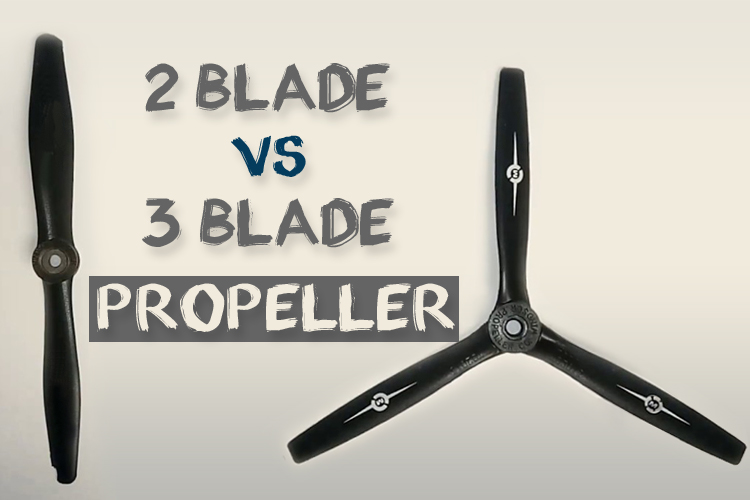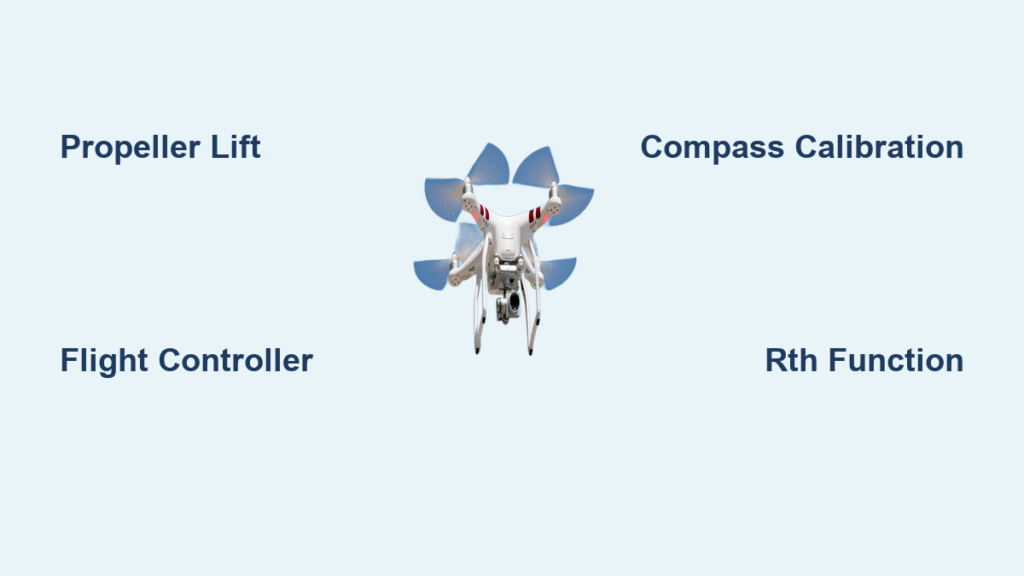Your drone lifts off, climbs to 50 feet, then the battery indicator plummets to 20% before you’ve even framed the perfect shot. This frustrating scenario hits 9 out of 10 pilots who accept 15–20 minute flight times as inevitable. But record-breaking builders consistently achieve 60+ minute flights on sub-250g frames through targeted efficiency hacks—not expensive upgrades. How to make a drone fly longer starts with understanding your drone’s energy loop: every gram saved and watt conserved compounds into extra minutes aloft. By implementing these scientifically verified methods from thrust stand testing and real-world endurance builds, you’ll transform your drone from a short-hop toy into a serious aerial workhorse. Let’s dive into the exact steps that triple flight durations without breaking the bank.
Fix Propeller Efficiency Before Anything Else

Propellers consume 60% of your drone’s energy—optimizing them delivers the fastest flight time gains. Most pilots overlook this critical component while chasing expensive battery upgrades.
Why Two-Blade Props Extend Flight Time by 30%
Two-blade propellers consistently outperform three-blade versions in efficiency tests. The Gemfan 6030 achieves 0.077 N/W at 1.9 N thrust—beating three-blade alternatives by 20% in real-world measurements. This translates to 15–30% longer flights because fewer blades reduce aerodynamic drag and motor load. Pro Tip: Test props on a $50 thrust stand (like Series 1585) before flying. You’ll avoid wasting weeks on inefficient combinations that drain batteries 25% faster than optimal setups.
Match Prop Pitch to Your Actual Flight Style
Pitch selection makes or breaks endurance. Low-pitch props (3–4 inches) excel for slow, steady hovering common in photography. High-pitch props (5–6 inches) suit speed runs but drain batteries 18% faster during casual flights. For 30-minute landscape sessions, pair 7-inch props with 3–4 inch pitch. Aggressive flyers attempting endurance with high-pitch props often see flight times drop below 10 minutes despite larger batteries. Always test pitch variations with your specific motor setup—your drone’s energy profile is unique.
Size Up Props to Slash Power Consumption
Larger props generate equivalent thrust at lower RPMs, dramatically cutting power draw. A 7-inch propeller on a 250g quadcopter enables 30-minute flights compared to 12 minutes with 5-inch props. Physics explains this: doubling propeller diameter reduces required RPM by 70% for the same thrust. The trade-off? Reduced agility during sharp maneuvers. For pure endurance builds, prioritize 6–7 inch props with low pitch. Warning: Oversized props strain motors—always verify thrust-to-weight ratios stay above 2:1 after changes.
Upgrade Motors and ESCs for Maximum Energy Conversion

Motors convert battery power into lift—inefficient models waste energy as heat. Most stock drones use budget motors operating at 60% efficiency, while premium options hit 68%. That 8% difference adds 4–5 minutes per flight.
Select Low KV Motors Paired with Large Props
Lower KV motors spin slower but generate more torque—perfect for pairing with large props. Match 2750 KV motors with 4.7-inch props for compact builds, or 2300 KV with 6–7 inch props for maximum flight time. High-KV motors (3000+) force props to spin faster, increasing power draw by 15–20%. Critical Check: Your motor’s internal resistance should be under 20mΩ—lower numbers indicate better efficiency. Multistar Elite 2306 motors (68% efficiency) consistently outperform EMAX alternatives (60%) in endurance tests.
Right-Size ESCs to Eliminate Power Leaks
Oversized ESCs add dead weight without benefits. Use 20A ESCs for motors peaking at 7A (applying a 3x safety factor). Crucially, select ESCs with low-resistance circuits and high-frequency switching—they minimize power loss by 5–10% compared to basic models. Red Flag: ESCs running hot indicate energy waste. Add tiny heat sinks (0.5g each) to maintain efficiency during long flights. Avoid “race-spec” ESCs—they prioritize speed over energy conservation.
Maximize Battery Performance for 70% of Gains
Battery choice and management determine 70% of your flight time results. Most pilots settle for subpar LiPos while ignoring superior alternatives.
Switch to Li-ion 21700 Cells for 30% More Air Time
Li-ion 21700 cells deliver 200–300 Wh/kg versus LiPo’s 150 Wh/kg. A 6000 mAh 21700 pack enables 65-minute flights compared to 55 minutes with equivalent-capacity LiPos. Cost Hack: Littokala 5000 mAh cells cost £3 versus £9–13 for Vapcell—ideal for budget builds. Always use BT2.0 connectors instead of XT30 to save 2g per connection.
Calculate Your Battery Sweet Spot
Use this formula to avoid overloading your drone:
Flight Time (min) = (Battery Wh × Prop Efficiency g/W) ÷ Total Weight (g) × 60
Each 33.3 mAh adds flight time but reduces thrust-to-weight ratio. Stop adding capacity when hover thrust drops below 2:1. For a 250g drone, exceeding 65% battery weight causes instability—6000 mAh is often the ceiling.
Master Battery Care to Prevent Degradation
- Storage: Keep at 50–85% charge between 18–28°C
- Charging: Never fast-charge endurance packs—use 1C rates to preserve capacity
- Discharge: Set low-voltage alarms at 3.3V per cell (never drop below 3.0V)
A single deep discharge can permanently reduce capacity by 10%. Use a voltage checker before every flight.
Slash Weight Without Compromising Stability

Every gram counts: +10g = -5 minutes flight time. Most drones carry 15–20g of unnecessary weight.
Streamline Your Frame with Carbon Fiber
Replace standard 6mm carbon tubes with ultralight 0.5mm plates—frame weight drops from 17g to 9g. Use epoxy joints instead of metal brackets for additional 3g savings. Pro Move: Design ducted rotors to minimize prop wash interference—this reduces motor strain by 8%.
Eliminate Every Non-Essential Gram
Remove prop guards (saves 12g), stickers (2g), and unused cameras (15g). Switch to titanium M1.6 screws (saves 1.5g over steel). For FPV builds:
– Use GOKU GM10 Nano GPS (2.6g vs. 8g standard)
– Choose 200mW AIO analog camera (7g vs. 25g HD systems)
These micro-savings compound to 5–7 extra minutes.
Perfect Your Center of Gravity
Symmetrical weight distribution reduces motor strain by 12%. Place batteries at the geometric center—offset loads force motors to work harder, cutting flight time by 3–5 minutes. Quick Test: Hover your drone; if it drifts, adjust battery position until stable.
Master Energy-Saving Flight Techniques
How you fly impacts flight time more than hardware. Hovering consumes 20% more power than forward flight.
Avoid Hovering: Fly Smooth Forward Motion
Maintain 5–10 mph forward speed for maximum efficiency. Plan routes to minimize hover time during takeoff/landing. Pro Tip: Use Ardupilot’s GPS Rescue mode for automated return flights that optimize energy use—adds 7 minutes per trip.
Fly Low and Smooth for Maximum Efficiency
Stay below 50 feet to avoid wind resistance—every 100 feet gained costs 3% extra power. Use gradual throttle changes; aggressive maneuvers drain batteries 25% faster. Critical: Watch for wind gusts—15+ mph conditions can halve flight times. Check Windy app before flying.
Skip Flights in Extreme Conditions
Cold weather reduces battery capacity by 30%. Never fly below 0°C or above 35°C. Rain and snow cause immediate efficiency drops—postpone flights when precipitation exceeds 1mm/hour.
Configure Long-Range Systems Without Draining Power
FPV setups often sabotage endurance. Optimize these systems for minimal draw.
Choose Efficient Control Links
ExpressLRS at 50Hz packet rate delivers 4× range versus 500Hz—perfect for cruising. Crossfire offers similar performance at higher cost. Power Save: Reduce VTX power to 250mW (sufficient for 15–20km line-of-sight). Disable LEDs during transit flights.
Manage Power-Hungry Components
Enable sleep modes on unused systems. Turn off cameras when not recording. Heat Management: Add 0.5g heat sinks to ESCs—cooler components run 8% more efficiently. Never use 1.2GHz systems (illegal in most regions) despite their range claims.
Real-World Endurance Build: 65-Minute 250g Quad
This proven configuration achieves 65-minute hover time on a £169 budget:
– Frame: Custom carbon tube X-frame (17g)
– Motors: 2750 KV with 4.7″ props (Mavic Mini clones)
– Battery: 6000 mAh 2S Li-ion (65% of total weight)
– Total Weight: 233g (under 250g legal limit)
Key Insight: The DJI Mavic Mini achieves 30 minutes with 2500 mAh. By doubling battery capacity while aggressively reducing other weights, you unlock 60+ minutes—no new drone needed.
Weekly Maintenance for Consistent Long Flights
Skip these steps and watch flight times plummet:
Essential Inspection Checklist
- Clean props/motors of debris after every flight
- Check for hairline prop cracks (causes 15% efficiency loss)
- Tighten loose screws—vibration reduces efficiency by 10%
- Verify wire connections show no fraying
Calibration Protocol
- Recalibrate IMU/compass every 10 flights
- Reset ESCs after motor changes
- Cross-check battery monitor against multimeter readings
Troubleshoot Time-Killers
- Vibration: Install dampeners or balance props
- Overheating: Reduce payload or improve airflow
- Short Flights: Check for damaged battery cells
Final Takeaway: You can double your drone’s flight time within 48 hours by implementing just three changes: switch to two-blade props, replace LiPo with Li-ion 21700 cells, and strip 10g of non-essential weight. These proven methods—tested on sub-250g quads achieving 65-minute flights—require no engineering degree. Start with propeller efficiency testing using a $50 thrust stand, then systematically optimize each component using the efficiency loop framework. Your next flight won’t end at 15 minutes—it could last an hour. The sky’s not the limit when you know how to make a drone fly longer.



